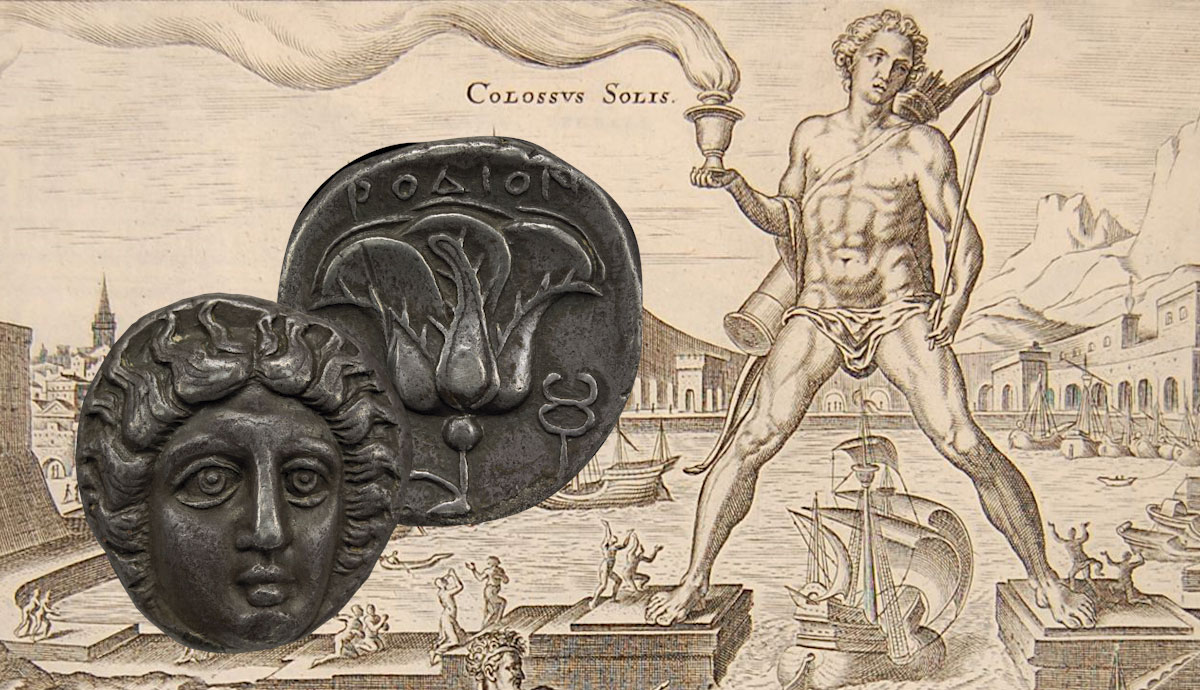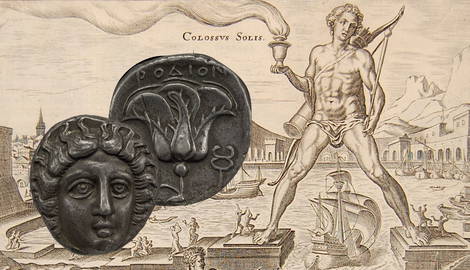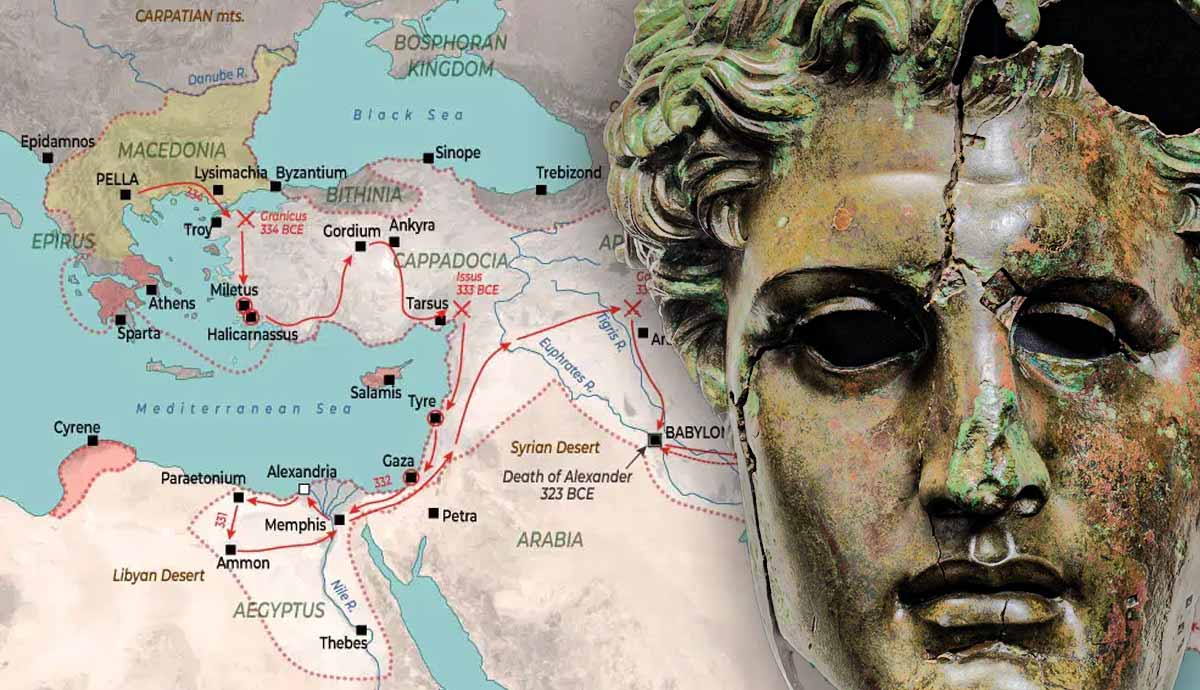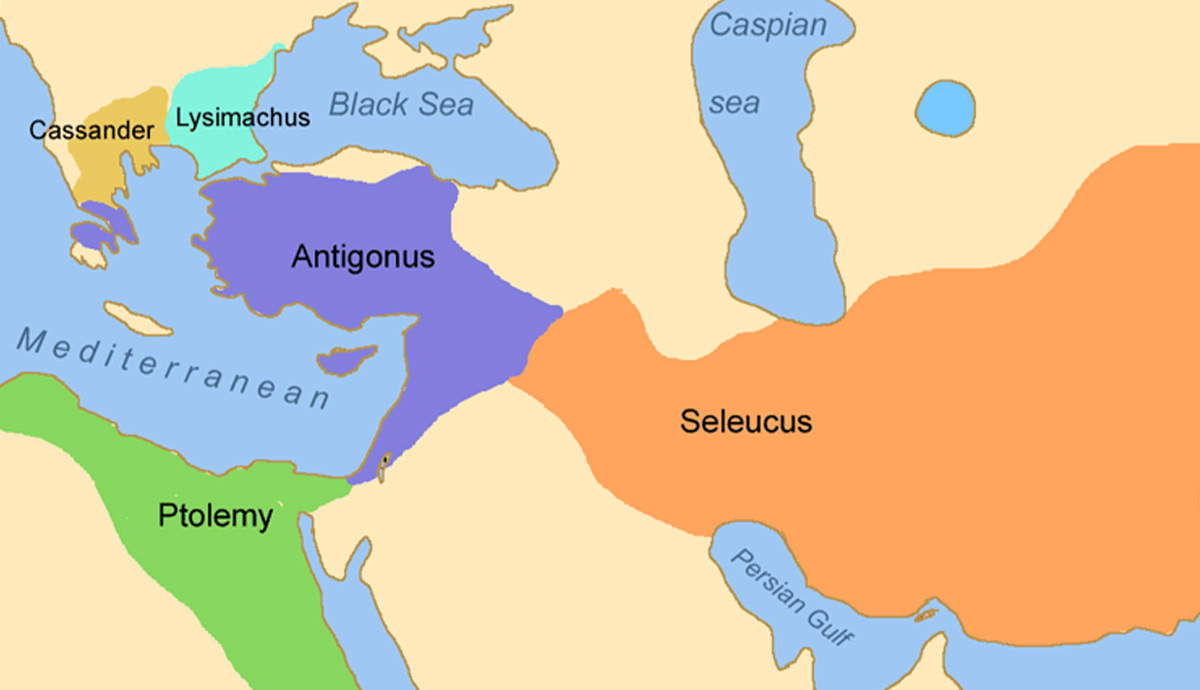
The Colossus of Rhodes was a monumental bronze statue of the sun god Helios, built to commemorate Rhodes’ resistance during a siege laid by Demetrius Poliorcetes. Constructed over 12 years beginning in 292 BCE, the Colossus, one of the Seven Wonders of the Ancient World, stood approximately 32 meters tall, showcasing the ingenuity of Hellenistic engineering. Though it stood for only 54 years before an earthquake toppled it, its immense scale and historical significance have ensured its enduring legacy in art and popular culture.
Quick Facts About the Colossus of Rhodes
| Built | 294–280 BCE |
| Creator | Chares of Lindus, a sculptor born on the island of Rhodes and pupil of Lysippus. |
| Size & Description | A 32-meter (105 feet)-tall bronze statue of the sun god Helios |
| Location | Harbor of Rhodes, the main city of the island of the same name |
| Destruction | Toppled by an earthquake in c. 225 BCE. |
Why Was the Colossus of Rhodes Created?

The story of the Colossus of Rhodes begins in the fractious and febrile atmosphere that developed around the Hellenistic world after Alexander the Great’s death in 323 BCE.
Alexander’s successors — the diadochi — had each snatched pieces of the former king’s vast empire, and vied with each other for supremacy. It is against this backdrop that the story of the Colossus starts.
In the last years of the 4th century, Demetrius Poliorcetes laid siege to Rhodes, at the time a powerful and wealthy naval force in the Aegean Sea. The siege of Rhodes was another example of the tensions that arose between the diadochi in their attempts to secure preeminence.
Indeed, Demetrius’ aim was to break the resolve of the city and compel them to abandon their close relationship with Ptolemy, the ruler of Alexander’s former conquests in Egypt. Demetrius was the son of Antigonus I Monophthalmos (Antigonus the One-Eyed) and a member of the Antigonid dynasty that controlled Macedonia and parts of Greece.

The siege, which began in 305 BCE, was to prove an arduous undertaking for Demetrius and his allies (which included many pirates!).
The city of Rhodes was heavily fortified. Although Demetrius’ land forces were able to breach the city walls, they were repelled with heavy losses, and the defenses were reconstructed. Ultimately, the siege was abandoned after a year in 304 BCE. To attempt to save face, the dejected Antigonid ruler presented the siege as a victory because the Rhodians ostensibly agreed to remain neutral (much as they had prior to the siege…).

In abandoning the siege, the Antigonids left behind much of their equipment. The resourceful Rhodians gathered this material together and sold it on. In a world riven by inter-kingdom war, the equipment left behind fetched a pretty penny.
Now 300 talents richer, the Rhodians decided the best use of the money was a dedication to the city’s patron deity, the sun god Helios. They contracted the artist Chares, a native of the island, for the project. His pedigree was without question: not only had he been involved in monumental dedications previously, but he had studied under Lysippos himself, the great sculptor of bronze who had been patronized by Alexander the Great. The Rhodians’ victory monument would be steeped in the culture of the Hellenistic world.
Who Was the Sun God Helios?

Helios was one of the diverse cast of deities that made up the ancient Greek pantheon. In religion and mythology, Helios was the god and personification of the Sun. The sun deity is readily recognizable across a range of media, including pottery and relief sculpture.
Typically, the god is shown with a radiant crown (symbolizing rays of light) and/or driving a chariot of horses across the sky; it was this that caused the rising of the sun each day.
The god features prominently in several of the most well-known myths from ancient Greece. He is, for example, responsible for persuading Zeus to strike down the crew of Odysseus, who had so eaten the sacred cattle of Helios at Thinacia.

Helios, who was naturally the brother of the moon goddess Selene, was like other Greek deities in siring a plethora of offspring. Notable among these were the seven sons he had with the nymph Rhodos. The sons of some of these children became the prominent heroes of the three most important cities on Rhodes (Ialyssos, Kamiros, and Lindos), which helped cement the relationship between the island and the worship of the sun god as their patron deity.
In fact, even before the Rhodians decided to erect the Colossus, the island held the Halieia. This festival, deriving its name from the Doric form of Helios (Halios), included chariot and horse racing, as well as gymnastics and music contests. According to the late 2nd-century CE Roman grammarian Festus, the Rhodians also sacrificed a chariot of four horses into the sea during this festival in honor of the sun god’s daily journey across the sky.
How Was the Colossus of Rhodes Built?

Wonders, as you might expect, are not built in a day. It took the Rhodians twelve years to complete the Colossus. The construction process began in 292 BCE, more than a decade after Demetrius’ decision to lift the siege.
The accounts of the construction provided by various sources differ in a number of details, but several consistent details can be teased out of these. There is a broad consensus, for instance, that the Colossus stood around 70 cubits in height, which equates to roughly 32 meters (105 feet).
Pliny the Elder, who admittedly could only have seen the statue after it was toppled, provides an evocative impression of its sheer size: “few men can clasp the thumb in their arms, and its fingers are larger than most statues.” The Roman writer also gives us some insight into the engineering expertise that went into the construction of the Colossus. In peering into the cavernous spaces of the statue’s interior, Pliny describes large masses of rock. These were added to the sculpture to provide stability during its erection.

Less clear is the posture and location of the statue; many imaginings of the wonder in its completed state have the sun god bestriding the entrance to the harbor at Rhodes, with one foot on either side and ships passing through.
This seems highly unlikely for the simple fact that this would have required the Rhodians to close their harbor for almost the entire period of construction. For a society so dependent on its maritime and mercantile links, this seems unthinkable!

What is much easier to imagine is how the god himself looked. The regular depictions of Helios across so much material culture in the ancient world ensure that we can be confident in suggesting the god would have been adorned with his usual curled locks and radiate crown, as shown on contemporary Rhodian coinage.
When & How Was the Colossus of Rhodes Destroyed?

Of all of the Seven Wonders of the Ancient World, only the Great Pyramid of Giza remains standing to this day. Of the rest, the Colossus of Rhodes enjoyed one of the briefest lives. The enormous statue, famed throughout the Mediterranean world, was toppled after standing for just 54 years.
An earthquake in 226 BCE brought the statue crashing down (as well as causing considerable damage to the city and its harbor). The fate of the statue offers further weight to the argument that it could not have been positioned bestriding the harbor. If it had fallen from this position, it would have blocked the harbor at Rhodes, devastating the city even further.
The enormous remains of the Colossus remained on the ground at Rhodes for a further eight centuries. Visitors still flocked to the island to see the remnants of the wonder, despite the sun god’s now recumbent position. Pliny documented the remains of the Colossus, as did the geographer Strabo. Notably, he records that there was a possibility of re-erecting the statue, but that the Rhodians dismissed the idea after the warning of an oracle.

Ultimately, it seems the Colossus of Rhodes had a fittingly cyclical fate. Where it had first been made from the trophies of war, so too did the fallen giant eventually become the spoils of conquest. In 653 CE, General Muawiyah, commander of an Arab army, captured Rhodes.
According to a Byzantine chronicler (Theophanes the Confessor), the great Colossus was melted down, and the metal was sold. The veracity of this story is ultimately questionable. Yet, this possibly apocryphal account offers a compelling bookend to the life of the Colossus.
The Afterlives of the Colossus of Rhodes

Although the Colossus of Rhodes may have towered over the people of the island for a brief half-century in the 3rd century BCE, it has enjoyed a much more enduring cultural legacy. The statue has captured the imagination of historians, artists, and politicians for an even longer period than the great form of the sun god lay fallen.

Normally, imitation is the sincerest form of flattery, but what about if you’re imitating a god? In the mid-1st century CE, the emperor Nero formally seized public land in the center of Rome and turned it into an opulent private villa (the domus aurea, or Golden House). In the center of the emperor’s vast property was a lake, next to which he erected an enormous statue of himself, rivaling in size the Colossus of Rhodes.

Of course, when Nero fell and was punished with the damnatio memoriae, the statue had to be repurposed. So, his successor, Vespasian, repurposed the Neronian colossus as a statue of the Roman sun god Sol.
In time, the lake next to the statue would be drained, and on the land stolen from the people by Nero, a great public arena would be built. From the Colossal statue adjacent, the Flavian Amphitheatre would take its enduring moniker: the Colosseum.

Much as with Nero, delusions of grandeur are never far from the history of the Colossus. The popular imagining of the Colossus bestriding the harbor at Rhodes was mimicked in the so-called Rhodes Colossus.
Named for the late 19th-century British imperialist Cecil John Rhodes, it tapped into the public’s awareness of the ancient world to illustrate the British Empire’s desire to join its African dominions from Cairo to Cape Town by rail and telegraph line.
It was perhaps such attempts to hijack the Rhodians’ devotion to their patron god that prompted Emma Lazarus to implore in her poem The New Colossus, “Keep, ancient lands, your storied pomp!” For the American poet, the new Colossus, the Statue of Liberty, represented something different. Despite this, there is no escaping the enduring impact of the Colossus of Rhodes on history.










